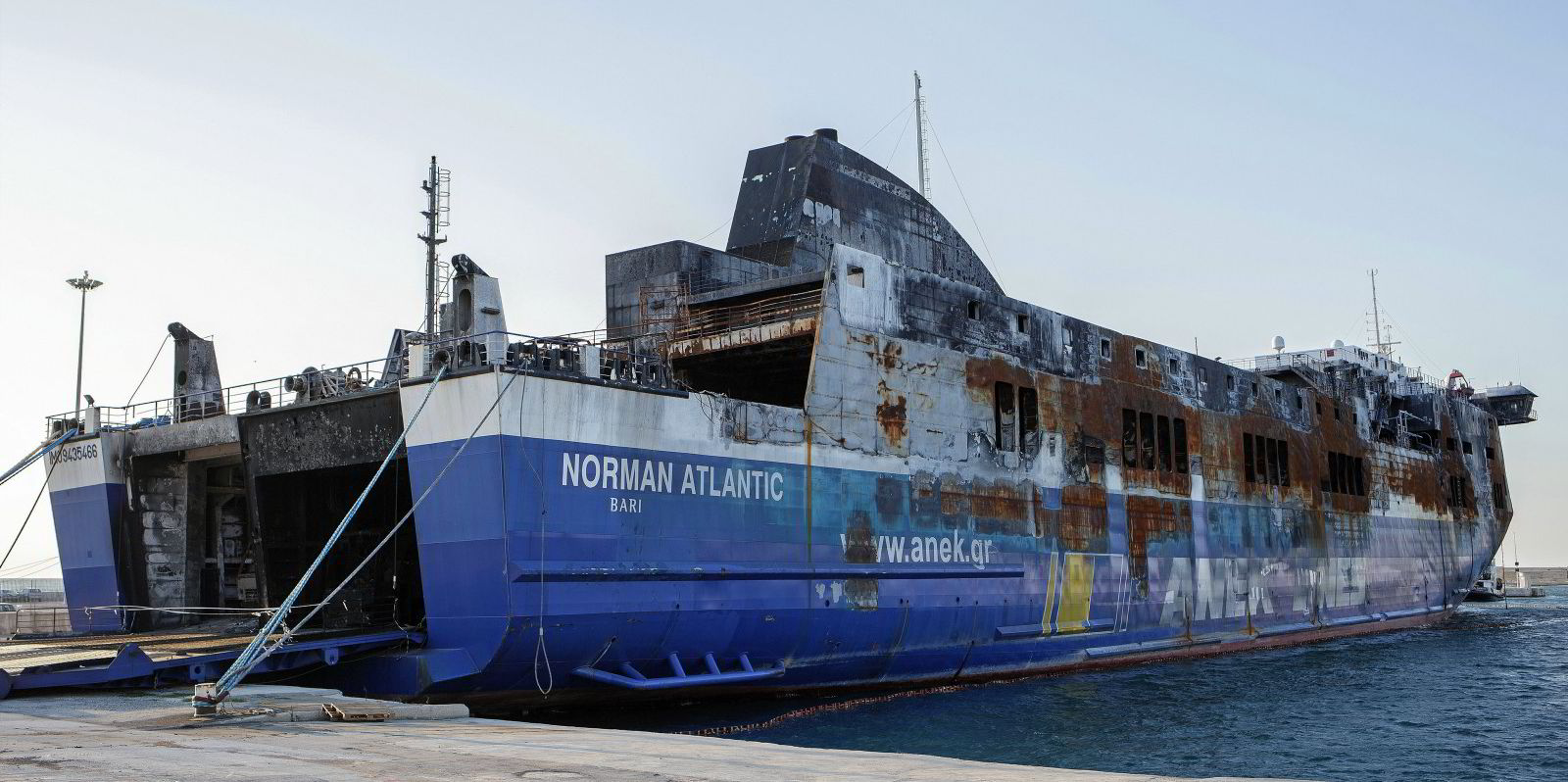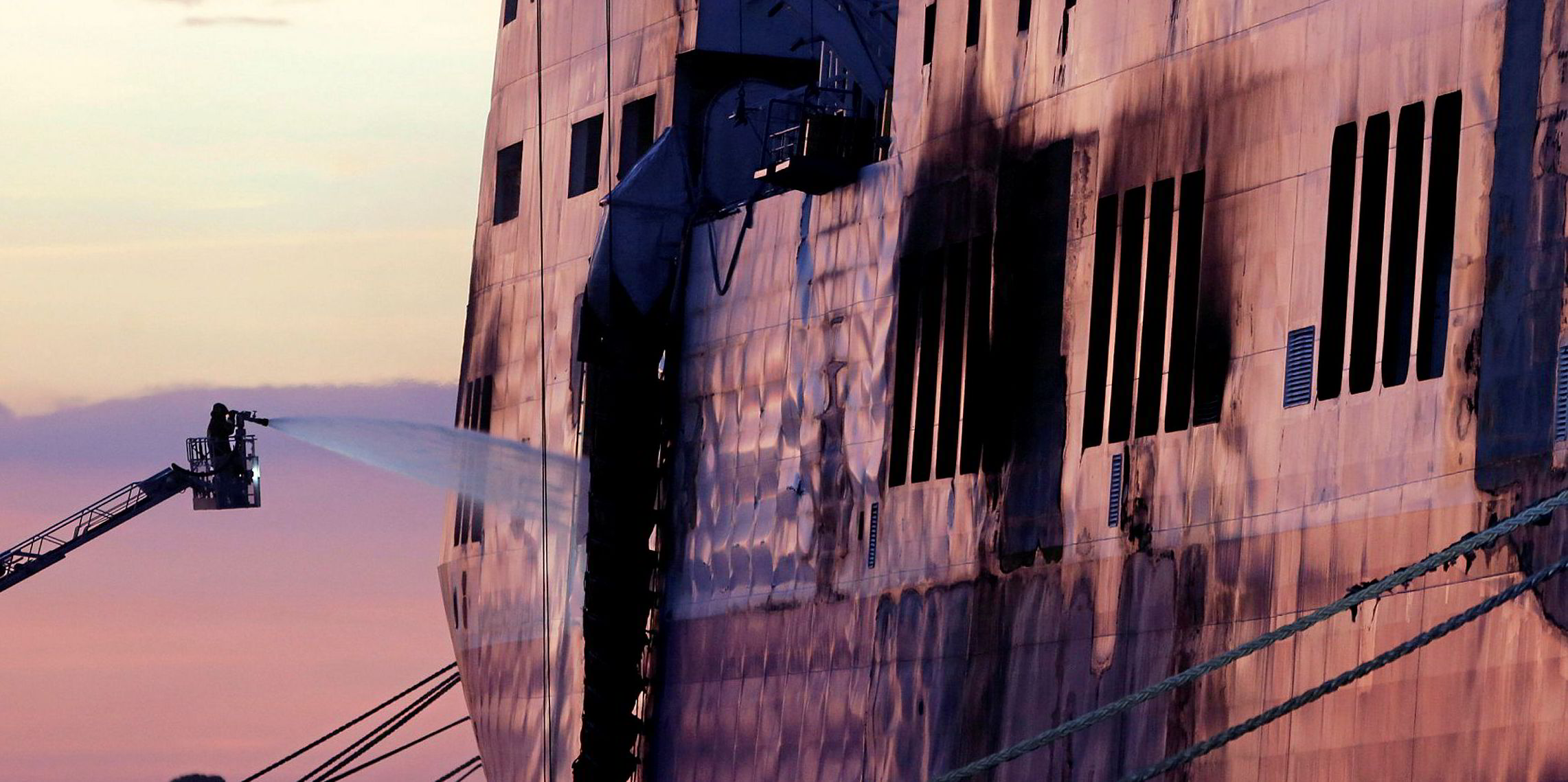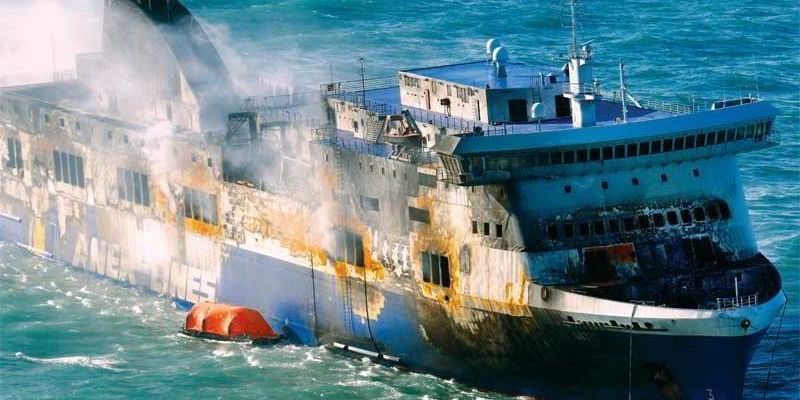An Italian court has convicted three of 32 crew members for their role in the Norman Atlantic ferry disaster.
The court in Bari jailed captain Argilio Giacomazzi for six years; first engineer Gianluca Assante for five years and four months; and crew member Franceso Nardulli for three years.
Thirty-one people died and 64 were injured when the 26,900-gt Norman Atlantic (built 2009) caught fire in the Adriatic on the night of 27-28 December 2014. The flames spread rapidly through the ship and a major international effort was launched to rescue the 444 passengers and 55 crew.
According to a report by La Gazzetta del Mezzogiorno, the three crew members have been convicted of the crime of naufragio colposo, which roughly translates as “blame for the shipwreck”.
The vessel’s owner, Carlo Visentini, has been acquitted. No further proceeding will be taken against him under the statute of limitations.
His ship owning company Visemar di Navigazione and Greek charterer ANEK Lines were also acquitted by the court.
Prosecutors had pressed for sentences of nine years for the captain and Visentini.
Lessons
The criminal case was launched in 2019 in Bari, to where the hulk of the Norman Atlantic was towed and where it took firefighters almost two weeks to quell the blaze.
The wreck was subsequently seized by local authorities as evidence in the criminal investigation that followed.
A report released by Italian authorities in 2017 blamed the fire on refrigerated trucks that had been haphazardly loaded onto the open upper car deck. The blaze could not be contained by the ship’s fire-suppression systems, and burned through the electrical system, causing a complete blackout on board.
The report heavily criticised the chaotic response of the crew and the total breakdown of the safety management system on board.
The disaster led safety experts and classification societies to question the firefighting and containment capabilities of ferries built with open-sided upper vehicle decks, where well-ventilated fires under a tight steel deck reflected heat, and accumulated fire gases and were difficult to contain using CO2 systems.





